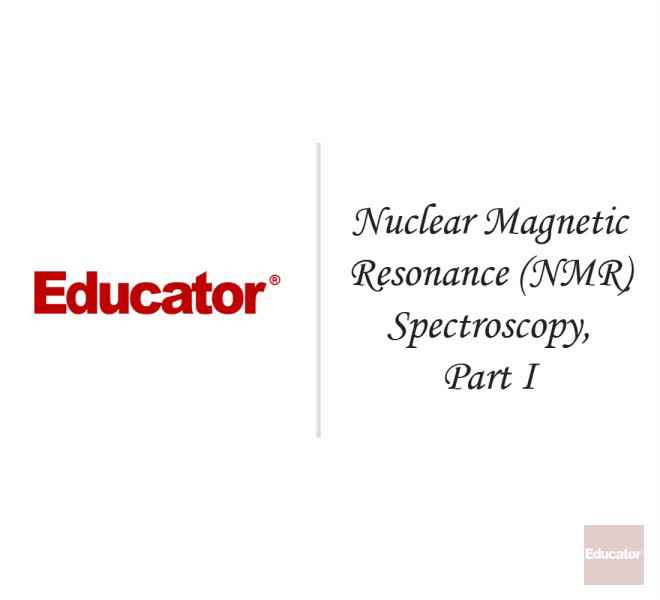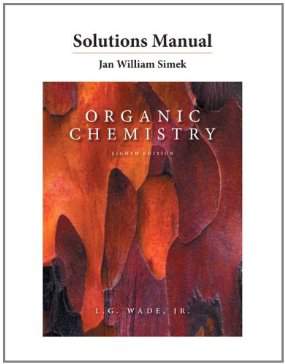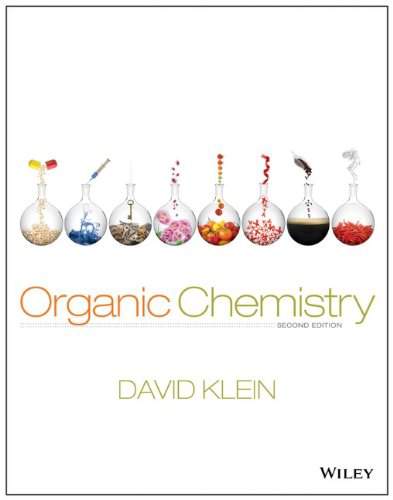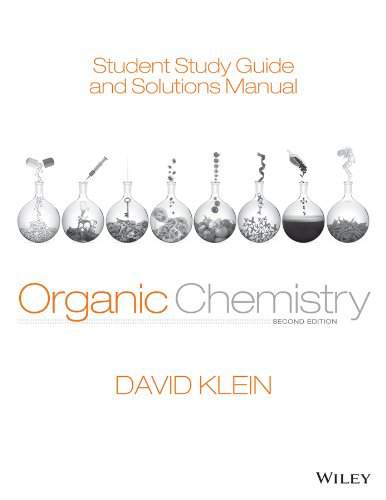Intro
0:00Organic Synthesis Strategies
0:15Goal
0:16Strategy
0:29
Example of a RetroSynthesis
1:30Finding Starting Materials for Target Molecule
1:31Synthesis Using Starting Materials
4:56
Synthesis of Alcohols by Functional Group Interconversion (FGI)
6:00Synthesis of Alcohols by Functional Group Interconversion Overview
6:01
Alcohols by Reduction
7:43Ketone to Alcohols
7:45Aldehyde to Alcohols
8:26Carboxylic Acid Derivative to Alcohols
8:36
Alcohols by Hydration of Alkenes
9:28Hydration of Alkenes Using H₃O⁺
9:29Oxymercuration-Demercuration
10:35Hydroboration Oxidation
11:02
Alcohols by Substitution
11:42Primary Alkyl Halide to Alcohols Using NaOH
11:43Secondary Alkyl Halide to Alcohols Using Sodium Acetate
13:07Tertiary Alkyl Halide to Alcohols Using H₂O
15:08
Synthesis of Alcohols by Forming a New C-C Bond
15:47Recall: Alcohol & RMgBr
15:48Retrosynthesis
17:28
Other Alcohol Disconnections
19:46
19:47Synthesis Using PhMGgBr: Example 2
23:05
Synthesis of Alkyl Halides
26:06Synthesis of Alkyl Halides Overview
26:07
Synthesis of Alkyl Halides by Free Radical Halogenation
27:04Synthesis of Alkyl Halides by Free Radical Halogenation
27:05
Synthesis of Alkyl Halides by Substitution
29:06Alcohol to Alkyl Halides Using HBr or HCl
29:07Alcohol to Alkyl Halides Using SOCl₂
30:57Alcohol to Alkyl Halides Using PBr₃ and Using P, I₂
31:03
Synthesis of Alkyl Halides by Addition
32:02Alkene to Alkyl Halides Using HBr
32:03Alkene to Alkyl Halides Using HBr & ROOR (Peroxides)
32:35
Example: Synthesis of Alkyl Halide
34:18Example: Synthesis of Alkyl Halide
34:19
Synthesis of Ethers
39:25Synthesis of Ethers
39:26
Example: Synthesis of an Ether
41:12Synthesize TBME (t-butyl methyl ether) from Alcohol Starting Materials
41:13
Synthesis of Amines
46:05Synthesis of Amines
46:06
Gabriel Synthesis of Amines
47:57Gabriel Synthesis of Amines
47:58
Amines by SN2 with Azide Nu:
49:50Amines by SN2 with Azide Nu:
49:51
Amines by SN2 with Cyanide Nu:
50:31Amines by SN2 with Cyanide Nu:
50:32
Amines by Reduction of Amides
51:30Amines by Reduction of Amides
51:31
Reductive Amination of Ketones/Aldehydes
52:42Reductive Amination of Ketones/Aldehydes
52:43
Example : Synthesis of an Amine
53:47Example 1: Synthesis of an Amine
53:48Example 2: Synthesis of an Amine
56:16
Synthesis of Alkenes
58:20Synthesis of Alkenes Overview
58:21
Synthesis of Alkenes by Elimination
59:04Synthesis of Alkenes by Elimination Using NaOH & Heat
59:05Synthesis of Alkenes by Elimination Using H₂SO₄ & Heat
59:57
Synthesis of Alkenes by Reduction
1:02:05Alkyne to Cis Alkene
1:02:06Alkyne to Trans Alkene
1:02:56
Synthesis of Alkenes by Wittig Reaction
1:03:46Synthesis of Alkenes by Wittig Reaction
1:03:47Retrosynthesis of an Alkene
1:05:35
Example: Synthesis of an Alkene
1:06:57Example: Synthesis of an Alkene
1:06:58Making a Wittig Reagent
1:10:31
Synthesis of Alkynes
1:13:09Synthesis of Alkynes
1:13:10
Synthesis of Alkynes by Elimination (FGI)
1:13:42First Step: Bromination of Alkene
1:13:43Second Step: KOH Heat
1:14:22
Synthesis of Alkynes by Alkylation
1:15:02Synthesis of Alkynes by Alkylation
1:15:03Retrosynthesis of an Alkyne
1:16:18
Example: Synthesis of an Alkyne
1:17:40Example: Synthesis of an Alkyne
1:17:41
Synthesis of Alkanes
1:20:52Synthesis of Alkanes
1:20:53
Synthesis of Aldehydes & Ketones
1:21:38Oxidation of Alcohol Using PCC or Swern
1:21:39Oxidation of Alkene Using 1) O₃, 2)Zn
1:22:42Reduction of Acid Chloride & Nitrile Using DiBAL-H
1:23:25Hydration of Alkynes
1:24:55Synthesis of Ketones by Acyl Substitution
1:26:12Reaction with R'₂CuLi
1:26:13Reaction with R'MgBr
1:27:13
Synthesis of Aldehydes & Ketones by α-Alkylation
1:28:00Synthesis of Aldehydes & Ketones by α-Alkylation
1:28:01Retrosynthesis of a Ketone
1:30:10
Acetoacetate Ester Synthesis of Ketones
1:31:05Acetoacetate Ester Synthesis of Ketones: Step 1
1:31:06Acetoacetate Ester Synthesis of Ketones: Step 2
1:32:13Acetoacetate Ester Synthesis of Ketones: Step 3
1:32:50
Example: Synthesis of a Ketone
1:34:11Example: Synthesis of a Ketone
1:34:12
Synthesis of Carboxylic Acids
1:37:15Synthesis of Carboxylic Acids
1:37:16
Example: Synthesis of a Carboxylic Acid
1:37:59Example: Synthesis of a Carboxylic Acid (Option 1)
1:38:00Example: Synthesis of a Carboxylic Acid (Option 2)
1:40:51
Malonic Ester Synthesis of Carboxylic Acid
1:42:34Malonic Ester Synthesis of Carboxylic Acid: Step 1
1:42:35Malonic Ester Synthesis of Carboxylic Acid: Step 2
1:43:36Malonic Ester Synthesis of Carboxylic Acid: Step 3
1:44:01
Example: Synthesis of a Carboxylic Acid
1:44:53Example: Synthesis of a Carboxylic Acid
1:44:54
Synthesis of Carboxylic Acid Derivatives
1:48:05Synthesis of Carboxylic Acid Derivatives
1:48:06
Alternate Ester Synthesis
1:48:58Using Fischer Esterification
1:48:59Using SN2 Reaction
1:50:18Using Diazomethane
1:50:56Using 1) LDA, 2) R'-X
1:52:15
Practice: Synthesis of an Alkyl Chloride
1:53:11Practice: Synthesis of an Alkyl Chloride
1:53:12
Patterns of Functional Groups in Target Molecules
1:59:53Recall: Aldol Reaction
1:59:54β-hydroxy Ketone Target Molecule
2:01:12α,β-unsaturated Ketone Target Molecule
2:02:20
Patterns of Functional Groups in Target Molecules
2:03:15Recall: Michael Reaction
2:03:16Retrosynthesis: 1,5-dicarbonyl Target Molecule
2:04:07
Patterns of Functional Groups in Target Molecules
2:06:38Recall: Claisen Condensation
2:06:39Retrosynthesis: β-ketoester Target Molecule
2:07:30
2-Group Target Molecule Summary
2:09:032-Group Target Molecule Summary
2:09:04
Example: Synthesis of Epoxy Ketone
2:11:19Synthesize the Following Target Molecule from Cyclohexanone: Part 1 - Retrosynthesis
2:11:20Synthesize the Following Target Molecule from Cyclohexanone: Part 2 - Synthesis
2:14:10
Example: Synthesis of a Diketone
2:16:57Synthesis of a Diketone: Step 1 - Retrosynthesis
2:16:58Synthesis of a Diketone: Step 2 - Synthesis
2:18:51











































 Answer Engine
Answer Engine







1 answer
Sun Feb 12, 2017 10:08 PM
Post by Ay Ayy on February 7, 2017
I have this question
1. (a) Determine the digital resolution of a 12 ppm proton spectrum collected on a 300 MHz NMR instrument. Number of data points collected for this spectrum was 1K (1024 bytes). [Hint: On a 300MHz instrument, 1PPM=300Hz]
(b). What would be the resolution of the above spectrum if 2000 data points were collected?
C. If we increase the spectral width from 12 to 20 ppm and keep all other acquisition parameters same as in problem 1(a) and collect a proton spectrum, what would be the acquisition time and resolution of the newly acquired proton spectrum?
1 answer
Fri Feb 3, 2017 9:52 PM
Post by Kaye Lim on November 30, 2016
I have a question regarding how NMR instrument works. This is what I thought, please check if it is correct.
So there is only 1 MHz value of radio wave applied on the sample (like 42.6 MHz for 1 Tesla magnetic field). That powerful pulse of radiowave excites all nuclei including nuclei of F,N,C as well. Then the radio receiver would tune into a correct MHz value to read the released energy from the nuclei (example, 42.6MHz to read proton nuclei, and other corresponding MHz to read nuclei of other atom type). Is everything above correct?
Thank you!
1 answer
Fri May 6, 2016 12:50 AM
Post by Tram T on May 4, 2016
For protons on Carbon table at 37:04, Why proton of Methyl is more upfield (more shielded)than methylene and methine proton?
I thought that since alkyl R is EDG, the more alkyl R group like in the case of methine proton, the more electron rich the area thus methine proton would give the most upfield signal instead of proton on methyl.
Please explain! Thank you! Great lecture!
1 answer
Wed Nov 11, 2015 9:10 PM
Post by Jeremy Cohen on November 11, 2015
Dr. Starkey, I didn't know where to put this but I just wanted to say thank you for all of your help this semester. Your lectures have been incredibly helpful in getting me through orgo 1.
1 answer
Fri Jul 17, 2015 1:27 PM
Post by Akilah Futch on July 16, 2015
what if you are not given the formula of the structure and all you have is the H nmr.
3 answers
Mon Jul 7, 2014 12:05 AM
Post by Anhtuan Tran on July 1, 2014
Hi Dr. Starkey,
When it comes to calculate the chemical shifts for CH2 group, we use the formula: 1.2 + ΔR1 + ΔR2 and we look up the table for the values of Δ. My question is where those values are coming from and how did they calculate those values and what is the difference between the Δ values and the regular values that we use for H that has only one neighbor.
Thank you.
1 answer
Mon Feb 3, 2014 12:04 AM
Post by Andrea Cola on January 31, 2014
How many 1H NMR signals would 1,3,5-trimethylbenzene give?
5 answers
Tue Jul 8, 2014 12:03 PM
Post by brian loui on April 2, 2013
on example 2, (the one w/ the carbonyl) aren't the "e" methyls diastereotopic and therefore not equivalent? i made models... and they're not superimposable and aren't enantiomers.
1 answer
Sun Feb 17, 2013 5:29 PM
Post by Betty Vowles on February 17, 2013
Like Marina, I too am having difficulties with the last portion of the video. Have the technical difficulties been resolved?
1 answer
Thu Feb 7, 2013 10:58 AM
Post by Synthia Gratia on February 6, 2013
On the last example on example 5, when figuring out the number of signals in an NMR, I'm a little confused on how you designated the different protons. when you did the stereochemistry for the H and t-butyl group that's not a real stereocenter right? I mean that C has a t-butyl group a H and when you try to figure out the other 2 groups it is the same because the molecule is symmetrical. So how did you apply stereochemistry there? Or was that to explain the different H's?
1 answer
Fri Dec 14, 2012 11:21 AM
Post by Natalie Bossi on December 13, 2012
How can I move on ahead of what the lecturer is talking about?? It appears that I am stuck with wherever she is talking about, no matter what I click on in the contents. This is wasting a huge amount of time.
Please help.
Natalie
2 answers
Last reply by: Amirali Aghili
Sat Apr 6, 2013 4:38 PM
Post by Marina Bossi on November 22, 2012
In addition to this, if the video reaches a certain point where the data hasn't been loaded yet, it goes back to the very beginning again!
2 answers
Last reply by: Marina Bossi
Tue Nov 27, 2012 6:50 AM
Post by Marina Bossi on November 22, 2012
Hi,
The lectures are very helpful but why can't wait click on the exact position we wish to see? It is quite frustrating because I have to watch the whole lecture before I get to the bit I was up to. Thanks
1 answer
Fri Sep 21, 2012 12:11 PM
Post by fiorella alzamora on September 19, 2012
Hello,
Why is Toluene 7ppm? y wouldnt it be 2.3 ? Thanks
2 answers
Last reply by: Gabriella Kaminer-Levin
Tue Jul 3, 2012 4:58 PM
Post by Gabriella Kaminer-Levin on June 29, 2012
Dear Dr. Starkey:
How come hydrogens bonded to an oxygen (say in an alcohol group) don't show up on an NMR (or do they)? At around 45 minutes in this video you are describing the approximate positions of hydrogens in an ester/ alcohol and you do not include the hydrogen bonded to an oxygen in an alcohol group in your analysis.
Thanks!
Gabriella
1 answer
Fri Feb 17, 2012 8:33 PM
Post by janine jones on February 15, 2012
trying to work a problem that I am stuck on about signals is there any way I can upload an image to you>
1 answer
Sun Feb 5, 2012 10:02 PM
Post by Kimberly McDevitt on February 5, 2012
Can you please inform me how to fast forward the lectures or to select the section that I previously left off on without having to watch the entire lecture over again?
2 answers
Last reply by: Sitora Muhamedova
Wed Jun 19, 2013 4:19 PM
Post by Jason Jarduck on October 17, 2011
Hi
Excellent lecture very detailed explanation.
Thank You
Jason Jarduck